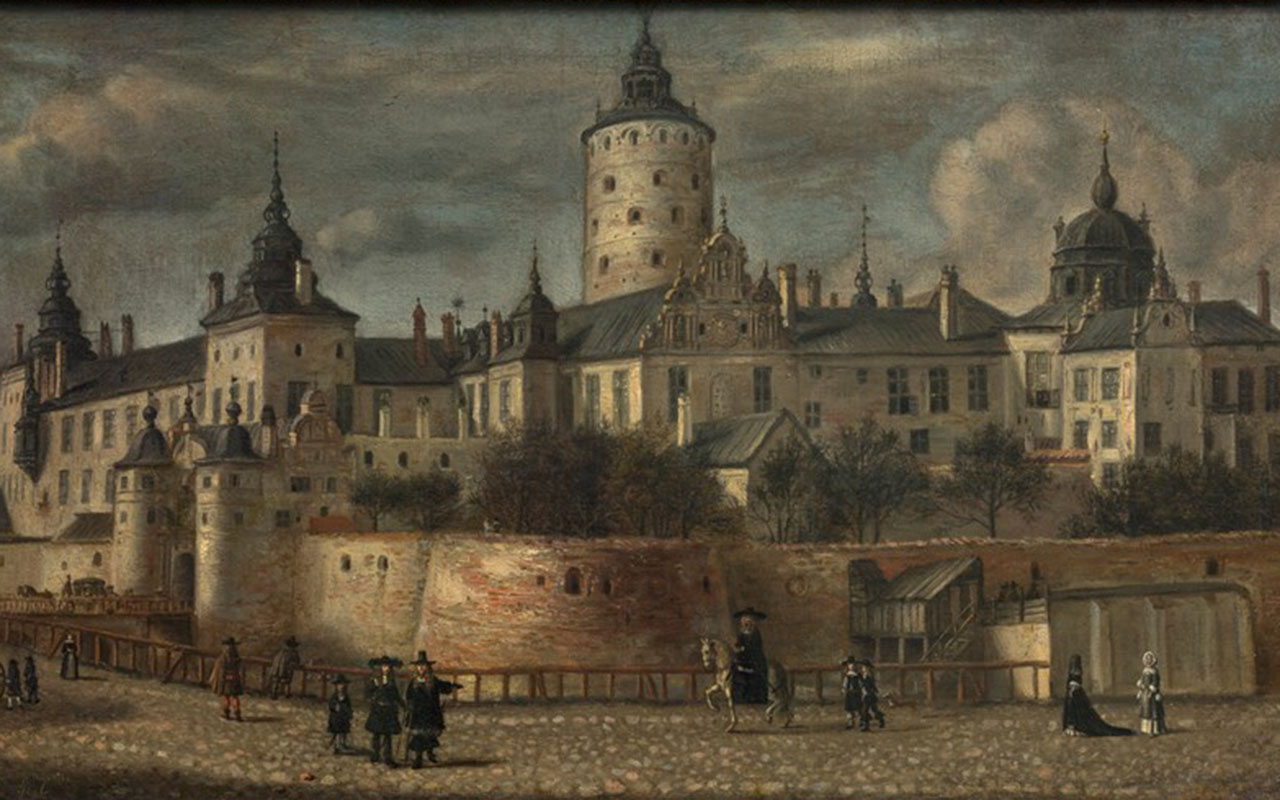Do you want to know what is fact and what is fiction in The Boy and the Ship: a Trip into the Past? Find out here!
Different sources to the story
The facts found in the story about Olof come from a number of different sources. There are historical sources, such as letters, transcripts of the questioning and diaries. There are also maps and items found when Vasa was brought up to the surface in the 1900s. Through all these sources, we know a lot about the shipyard, the building of Vasa, the accident and the people on board.
Margareta Nilsdotter and Erik Jönsson Krämer
We know that Margareta Nilsdotter was a high-ranking manager at the shipyard. The sources also show that Vice-Admiral Erik Jönsson Krämer sailed with Vasa. We know that he was quite old, 68 years old, when Vasa sank, and there were doubts at first as to whether he would survive. But fortunately he did, and was questioned at the palace a month later. During the questioning, Krämer stated that he had eaten a meal in Vasa’s cabin “together with his boy” the same day the ship was due to sail. The meal consisted of meat and bread. We believe that the boy was his personal servant. However, we do not know the name of his boy, so we have called him Olof in the story. Krämer then describes the accident itself and how, when Vasa was sinking, he ran below deck to make sure that the cannons were properly lashed. They were. His boy, however, was never questioned.
Erik Jönsson Krämer lived for a few more years after the accident, and is buried in Villberga in Uppland.
The questioning in the castle
Some other members of the crew were also questioned after the accident. This is how we know they had attended church services, probably in Stockholm Cathedral, before they set sail on Sunday, 10 August 1628. In those days, practically everyone attended church services every Sunday. Stockholm Cathedral still stands in the Old Town area of Stockholm to this day.
The questioning also reveals that Admiral Fleming had Vasa tested a few weeks before departure to see how steady it was in the water. Thirty people were made to run back and forth on the upper deck. This was done while Vasa lay ready below the palace in the middle of the city. Those who were nearby could see with their own eyes that the ship did not pass the test. Some people knew that Vasa had become too unsteady, meaning it could not withstand a strong wind. But the king, Gustav Adolf, was not at home and no one dared tell him the truth.
Letters narrate
We know from several letters that women and children were on board when Vasa sailed. Some of the children might have just been guests, but others might have been part of the crew. These young crewmen were servants and cabin boys, meaning young sailors.
An interesting diary
At the end of the story, we learn that most of Vasa’s cannons were made as early as the 1600s. This is known from a diary written by an Italian priest visiting Stockholm. In his diary, he describes how he saw the cannons being salvaged. This is why there are only three genuine cannons in the Vasa Museum today.
Finds from Vasa
The story ends with a chest with a hat in it. It was found on board Vasa when the ship was salvaged in 1961. You can see from the contents that there were several people sharing the chest. We do not know if one of the people was Krämer, but it must have been someone who was rich. The hat, which was at the top, was very valuable and modern.
The gold ring found on the ship is the only gold item from Vasa. Since Erik Jönsson Krämer was the most powerful person on board, it has been assumed that it was his. In addition, the ring was found next to a washed away staircase. In the questioning, Krämer says that he could hardly get up from the gundeck because some of the stairs had been washed away by the rushing water. But we cannot be sure that the gold ring was actually his.
